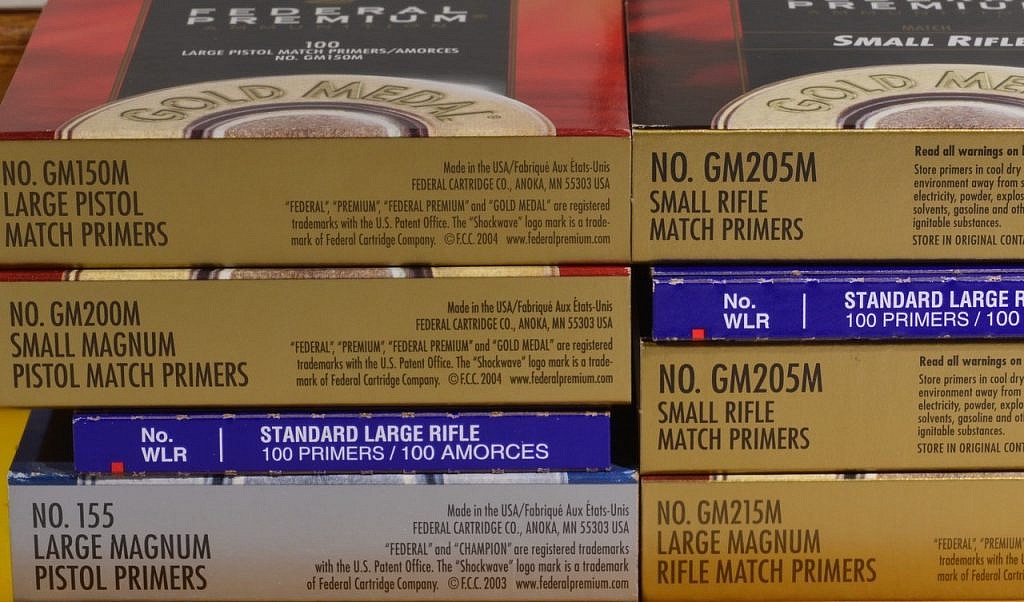
by Terry Wieland
A few weeks ago, one of the online shooting forums published a piece about the shortages we are experiencing in the ammunition world, and called the current dearth “the worst primer shortage in history.”
Either the writer has a short memory or no knowledge of history. Even in our lifetime (1996 and 2008) there have been shortages as bad or worse, and historically, the period between 1941 and 1947 constituted the worst of all. During that six-year period of war production, the only civilians doing any shooting were those who either had a vast stockpile of ammunition, or knew how to load their own and had shrewdly laid in a supply of components.
A direct result of the war shortages was that, after 1947, there was a boom in handloading, which saw the foundation of companies like Hodgdon (powder), RCBS (loading equipment), CCI (primers), and Sierra, Speer, Nosler, and Hornady (bullets). Since then, handloading has peaked and waned in popularity, largely depending on the availability and price of loaded ammunition.

Gold and diamonds – 2021 Style
In the past few years, ammunition prices plummeted as more foreign companies began tapping the vast American market, and competition drove prices to rock bottom. For example, around 2003, when the Canadian dollar dropped to about C$1.65 to the American buck, first-rate Canadian shotshells became available at about US$4.50 a box, undercutting everyone else — including trap and skeet shooters, who had loaded their own in order to be able to afford to keep shooting in the volumes those activities require.
For a few years, only the seriously eccentric, or those with habits they couldn’t break, or a few who required specialty light loads or shorter shells for English guns, continued to work the handles on their MECs, muttering all the while.
Whether it’s shotgun, rifle, or handgun ammunition, the one component that is the linchpin is the primer. Almost everything else can be scrounged, recycled, refashioned, or substituted for — from cases, to hulls, to powders, to wads — but not primers. That’s why, remembering 1996 and 2008, we refer to them as the “primer shortages,” often forgetting that other components were in short supply, too.
In 1996, for reasons never adequately explained except that the vaguely anti-gun Clinton Administration was in full flight, primers were so scarce that manufacturers were doling out bricks of them to wholesalers by the dozen, rather than the pallet; wholesalers were passing them on to retailers by the tray of 100 rather than bricks of a thousand, and the retailers were selling them to favored customers by the half-dozen, individually priced!
Normally, a brick of a thousand primers will run you about $35, depending on the type and brand. Getting five primers for a dollar is extortionate by comparison — that works out to $200/brick — but you pay what you have to.
Everyone I know who lived through 1996 sailed through 2008 (the incoming Obama Administration) with a big smile because we’d developed the habit of always keeping a good supply on hand, rotating the older ones to the front of the shelf like cans of tuna. Those for whom 2008 was a revelation then joined the Class of ’96 in becoming (let’s be blunt) hoarders and black-marketeers.
Trap shooters, especially, used to be ridiculed for their penny-pinching ways, crawling around on their hands and knees picking up ragged Double-A hulls to reload, keeping the worn-out crimps closed with everything from duct tape to Crazy Glue. One guy I knew even tried, at one point, to salvage plastic wads from down-range and reuse them, but he was an exception even among trap shooters.
Now, suddenly, trap and skeet and sporting clays people are finding they can’t buy the ultra-cheap “range” loads that all the American manufacturers began producing to counter competition from the under-priced Canadian stuff back in 2004. This was inexpensive because the components were the cheapest available, and the hulls were not easily reloaded. Double-A, Federal Gold Medal, and Remington Nitro hulls are readily reusable because they are well-made of durable (and expensive) materials.
It remains to be seen if the current shortage will spawn a new generation of handloaders. Since the unprecedentedly high demand of the last year is now expected to continue indefinitely as we wait for the new administration’s gun-control second shoe to drop, it may well. All indications are that it is already doing so.
And guess what the new generation of handloaders is saying, wide-eyed and unbelieving?
“I can’t find primers anywhere! What’s going on?”
Come, my son, and listen to my tale…
Terry Wieland has been Shooting Editor of Gray’s since 1993 and is the author of a dozen books on hunting, shooting, and history. His latest is Great Hunting Rifles — Victorian to the Present, published by Skyhorse in 1997. Last year, Skyhorse reprinted his acclaimed 1999 book on Robert Ruark, A View From A Tall Hill.
